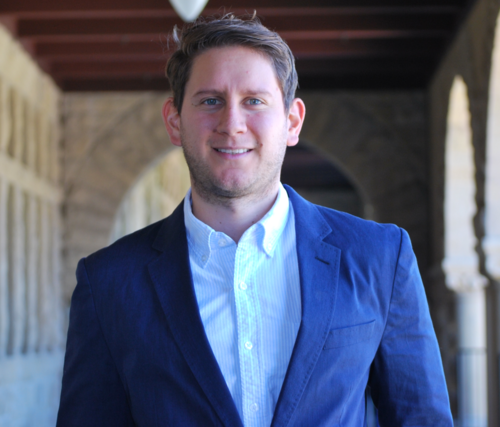On July 8, a 90-day pause on reciprocal tariffs ended. Only to be extended, for the most part, until August 1. We think. Maybe. Don't worry if you're confused; you're not alone. (By the way, here's a quick primer on the current state of flux.)
Tariff-related uncertainty has skyrocketed since February 2025. One often-cited measure that captures the frequency of articles about trade policy in U.S. newspapers reached all-time highs in its 40 year history and remains several times its pre-2025 average.
Given the sizeable effect policy-related uncertainty can have on firms' willingness to move forward on capital investment projects and hire new workers, we posed a set of questions to firms in our Survey of Business Uncertainty in June (our fielding period was June 9–20) to better understand the breadth of tariff-related uncertainty and to gauge how long business execs expect it to last.
Across the more than 900 responses to the question of whether respondents' firms were facing "...any uncertainty related to tariffs or trade policy?”, seven out of every 10 executives said yes. While that figure may appear to be high, it touches on the importance of global trade in the US economy and how heavily the issue is weighing on the minds of business decision-makers.
What is, perhaps, unsurprising is that the presence of tariff-related uncertainty is highest for manufacturing firms, a heavily trade-sensitive sector, where nearly 90 percent of execs reported facing tariff-related uncertainty in June. As figure 1 shows, the pervasiveness of tariff-related uncertainty was nearly as elevated in the retail and wholesale trade sector (roughly 85 percent) and in the construction, real estate, and mining sectors (nearly 70 percent). Interestingly, more than half of services firms reported facing tariff-related uncertainty as well. Potential explanations range from concerns over the impact of tariffs on consumer demand for services to worries over retaliatory tariffs . (This explanation especially begs us to field a follow-up question on the specific effect that uncertainty is exerting on these firms!)
While trade policy uncertainty seems to be part of the zeitgeist now, a key question that may likely determine the propensity for this uncertainty to disrupt firms' planning processes and fundamentally change business activity, is whether or not it is fleeting. And, here, business execs are of two minds.
The typical firm (as measured by the median respondent) anticipates tariff-related uncertainty to be largely resolved by November 2025. But measures of central tendency like the mean and median are not very useful in characterizing diffuse (and multi-modal) distributions such as the one shown in figure 2. What we can say is that business executives disagree to a large extent on how long it will take for trade-policy uncertainty to appear in the rearview mirror rather than on the windshield.
Even using simple "eyeball econometrics,” it appears that there are roughly two camps. A narrow majority of firms see trade policy uncertainty settling down by the end of the year. Another, albeit smaller, camp sees uncertainty over the direction of trade policy continuing to be a salient feature of the economic landscape for the better part of the next three years or so.
As events of the past few weeks have made clear, trade policy continues to evolve. For executives in our Survey of Business Uncertainty, uncertainty over tariffs and trade policy remains pervasive. Moreover, beliefs over when this uncertainty will fade vary widely. As of mid-June, a slight majority of firms see a relatively quick end to trade policy uncertainty, but a large cohort expect the fog of uncertainty to persist awhile. We will continue to explore these questions in the Survey of Business Uncertainty, so stay tuned.








